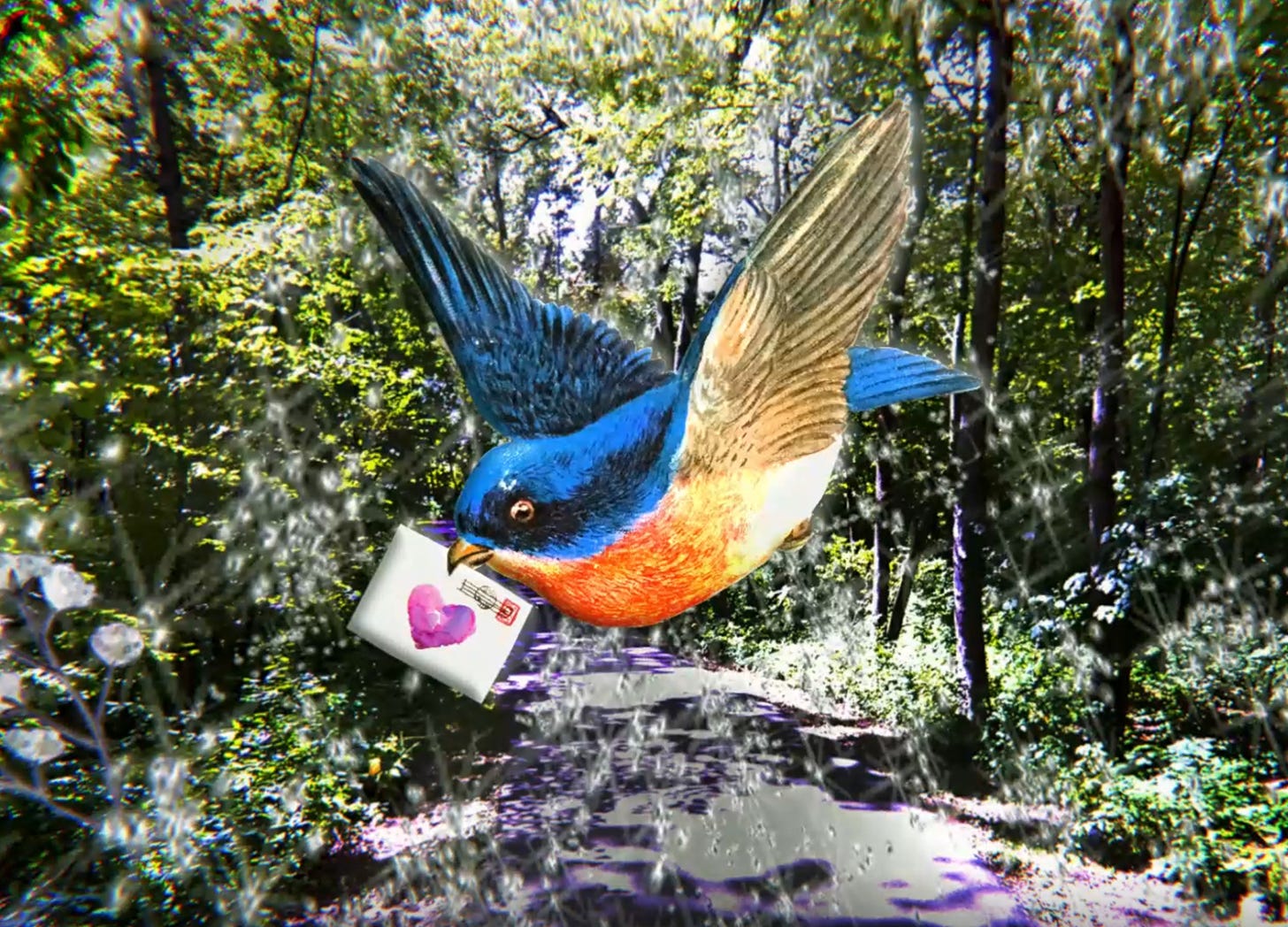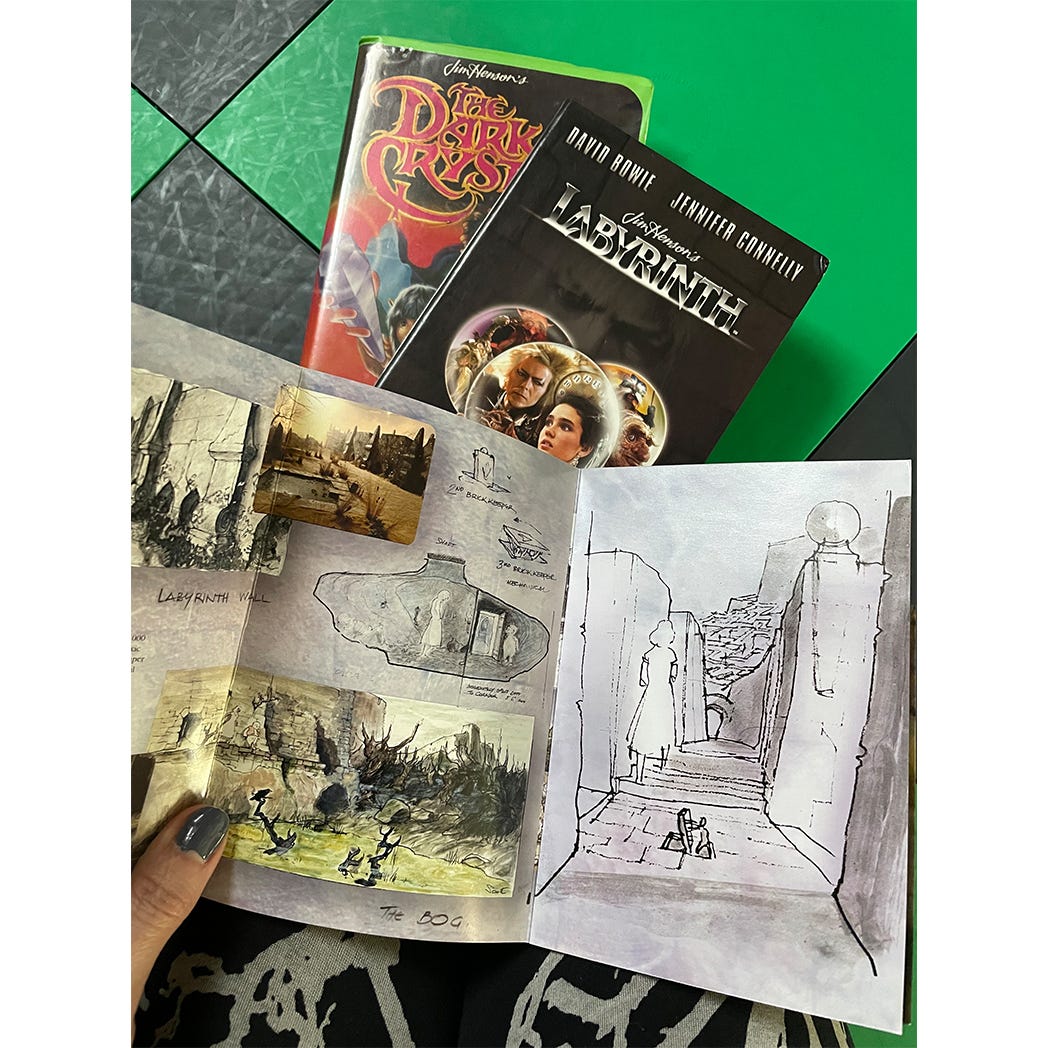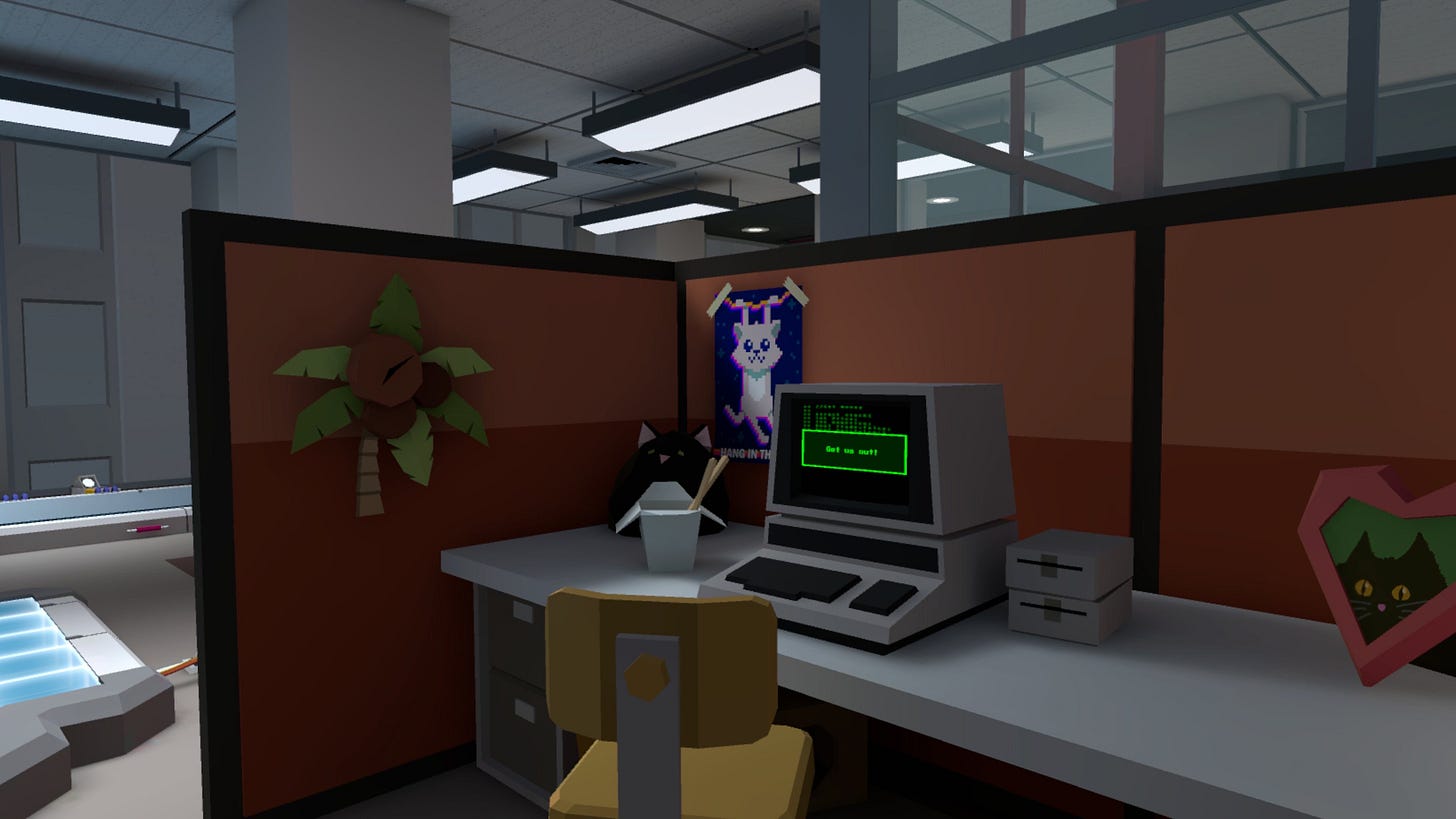People don’t send physical letters anymore. It’s been like this for a while. Around 2008 I naively encouraged young viewers of my children’s show to send letters to a P.O. Box. It sounded nostalgic, particularly to a team member who kept telling me to meet kids where they were at: online. In what felt like a last attempt, I was trying to recreate the specialness of sending and receiving these kinds of notes. One day, I received a letter from a young fan of the show saying how much she loved it because she felt like she was in the same world as the adorable hand-and-rod puppets: a raccoon, a squirrel, and a possum.
This didn’t just make my day. Her handwritten note made a lasting mark on my heart. It confirmed why I create the art that I do. And it only took one letter like this for me to continue dedicating myself to creating enchanting worlds. Although it was a video program, the immersive experience was there, transporting viewers to another realm. It was a defining moment for me in that it showed me that, by my definition, my show was a success even though I was in the red.
When I was this child’s age, I was a huge fan of Jim Henson and his films like “The Dark Crystal” and “Labyrinth.” I’d marvel at how one could dream up such worlds. They were so magnificently unreal that it made me want to be there. What would I do when I got there and what would it mean? Many times, I imagined myself trying to find my way out of my own maze.
Looking back at those last years of the 20th century, I can see now how important shared experiences were. Certain films, books, and music defined generations. I’m not the only one from my generation who loved “The Dark Crystal” and finding those who felt the same is how I made friends in college. Maybe one of the last works influencing a generation that straddled between the 20th and 21st centuries is “Harry Potter.” As I get older, I could be losing track, but I don’t think many new classic works are forming. Is it even possible today? Film studios, for example, seem to rely on previously successful IPs and are afraid to gamble on anything new.
Today’s media (or should I say content?) is also more niche. If you are a part of the small group perhaps that’s where you find connection. However, collective cultural moments are rarer as people consume different things from different silos. And the terminology has changed. Instead of saying “watching” or “listening” we often dump it all under “consuming” which sounds a bit grotesque as if we’re overeating. I bristle at these new terms. Being called a “creator” or “content creator” is a quick and easy way to describe what I sometimes do, but that could mean anything from clickbait to a book. We've become so niche that it's hard to tell what is worth paying attention to, as everything lumps together, piling into an ever-growing landfill of noise.
Can we tell universal stories that bring us together?
Can we relate and find common ground on a larger scale?
These are questions that influence what I’m building in VR.
So where do we start?
Presence and embodiment are unique to virtual reality but can be overlooked when focusing on the tech and gimmicky mechanics, or worse, trying to make it addictive. Instead of starting with 'Is it fun?' what if we asked: Is it relatable, awe-inspiring, or memorable?
Imagine returning to an experience simply because you like being there. Because it provides something that runs deeper than a dopamine trick.
Even though it’s been a few years since I’ve started creating stories in VR, the feeling never gets old. While playtesting Mermaid Song, I would just stand there and observe. In the stillness, the fish would swim past me as if I could reach out and touch them. Even better it was like the mermaid was speaking directly to me. This makes storytelling more than just emotional. It’s physical, personal, and dare I say even spiritual. If done right, a VR story can be relaxing and self-reflective, helping people connect with both the story and themselves.
Unlike books and films, VR offers embodiment where you inhabit the story rather than imagine it. This doesn’t make it better, just different. In a 3D space you experience the digital world using multiple senses and, with others, can be pulled out of isolation into a shared moment.
Don’t believe me? Am I getting too niche?
Let’s talk about Walkabout Mini Golf, one of the most successful VR games as an example. Yes, I use this one a lot. It’s a big influence on my work and I think it is doing a lot more than what’s on the surface. That’s good enough for a lot of us but if you want to go deeper, you can. For one thing, I like being there and it’s not just because of the beautiful lighting.
Walkabout is social where you play miniature golf with others and do so within different worlds. Each world, or course, has its own theme and unique story. These stories unfold as you explore them, at your own pace, making it more than just a game. Here is where shared experience returns. As you play with others and move through these storied worlds, you’re creating a special moment together. The game uses a lot of environmental storytelling techniques, which is nice because metaphors and symbols aren’t rigid or literal. They leave room for interpretation. This openness allows people to connect over shared themes while also bringing their own perspectives, fostering discussion rather than division.
VR feels like the natural evolution of what I’ve always loved about storytelling while offering a deeply human, immersive experience in an era of rapid and often unsettling technological change. This is not to say I won’t continue to paint or play music. To me it’s a matter of let go or be dragged. Additionally, I’m not embracing VR just because the tech is cool. It’s because of the unique qualities it brings that other art forms don’t. Could this be a digital form of communication that brings us together, or does it further immerse us in silos? Only time will tell.
We must not forget what brought us here: the classic literature, film, and music that changed our lives. How do they withstand the test of time, no matter the medium? These are the elements I believe must be brought into the VR experiences I create. I’ve embarked on a quest to find them, looking for clues while trying not to forget the value of human stories and expression.
What story, whether in a book, film, or game have you truly felt a part of?






